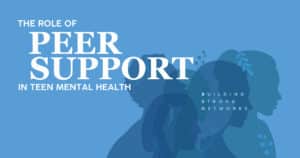Introduction
As the prevalence of eating disorders among teenagers continues to rise, the quest for effective treatments has never been more urgent. While still valuable, traditional methods often require complementing with newer, innovative approaches tailored to today’s youth’s unique needs and challenges. In this deep dive, we explore groundbreaking therapies reshaping the approach to eating disorder treatment in adolescents, aiming to provide not just recovery but a pathway to a healthier, more balanced future.
Understanding Teen Eating Disorders
Before delving into treatment options, it’s crucial to grasp the scope and impact of eating disorders in teenagers.
Types of Eating Disorders
- Anorexia Nervosa: Characterized by restricted eating leading to severe weight loss.
- Bulimia Nervosa: It Involves episodes of binge eating followed by purging.
- Binge Eating Disorder: This is marked by regular episodes of excessive eating without compensatory purging.
Challenges in Treatment
- Psychological Complexity: Teen eating disorders often coexist with issues like anxiety, depression, and low self-esteem.
- Social Influences: Peer pressure, social media, and cultural expectations significantly impact teens’ self-image and behaviors.
Innovative Therapies for Teen Eating Disorder Treatment
Emerging therapies are broadening the horizons of what’s possible in eating disorder treatment, emphasizing personalized and holistic approaches.
Family-Based Treatment (FBT)
- Principles of FBT: The Maudsley Approach involves the family as a key part of treatment, empowering parents to guide their teen’s recovery.
- Effectiveness: FBT has been particularly successful in treating anorexia in adolescents, with studies showing improved recovery rates and sustained remission.
Cognitive Remediation Therapy (CRT)
- Focus of CRT: Aims to improve cognitive processes such as planning, flexibility, and organizational skills.
- Benefits for Eating Disorders: Helps patients recognize and change rigid thought patterns and behaviors, a common trait in those with eating disorders.
Art and Music Therapy
- Therapeutic Benefits: These therapies allow teens to express emotions non-verbally, which can be particularly powerful for those who may find traditional talk therapy challenging.
- Integration in Treatment: Often used as a complementary approach, enhancing the effectiveness of conventional therapies.
Technology-Enhanced Therapy
- Apps and Virtual Reality: Innovative apps provide self-monitoring tools and support, while virtual reality can be used for exposure therapy and body image retraining.
- Teletherapy: Offers access to therapy at home, increasing accessibility and adherence to treatment programs.
Lifestyle Interventions and Support
Incorporating lifestyle changes and support systems can enhance the effectiveness of clinical therapies.
Nutritional Counseling
- Role of Dietitians: Registered dietitians are crucial in developing meal plans that ensure balanced nutrition while respecting the patient’s recovery process.
- Education: Teaching teens about nutrition helps them make informed choices and dispels myths about food and diets.
Peer Support Groups
- Shared Experiences: Facilitated groups provide a safe space for teens to share experiences and offer mutual support.
- Online Communities: Online forums offer assistance and convenience for individuals who cannot attend face-to-face sessions.
FAQs: Common Questions About Teen Eating Disorder Treatment
Q1: How long does treatment typically last?
A: The duration of treatment can vary widely depending on the severity of the disorder and the individual’s response to therapy. Typically, a comprehensive treatment plan spans several months to years.
Q2: Can eating disorders be completely cured?
A: While ‘cure’ may not always be the applicable term, many teens can recover from eating disorders and go on to lead healthy lives with proper treatment.
Q3: How can I help a teen struggling with an eating disorder?
A: Educate yourself about the disorder, communicate openly and supportively, and seek professional help. Being a consistent and non-judgmental support system is crucial.
Conclusion: Embracing a New Era in Treatment
The landscape of teen eating disorder treatment is evolving, with innovative therapies offering new paths to recovery that were not available just a decade ago. By combining established treatments with emerging techniques, healthcare providers are better equipped than ever to support teens in overcoming eating disorders. As research progresses and our understanding deepens, the potential for recovery grows, bringing hope to countless families navigating this challenging journey.
Visit websites such as the National Eating Disorders Association (NEDA) for further reading and resources on eating disorder treatment. These can provide valuable information and support networks.





